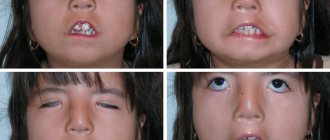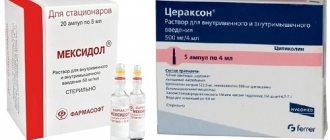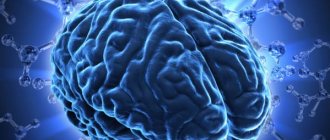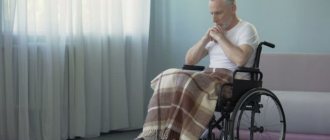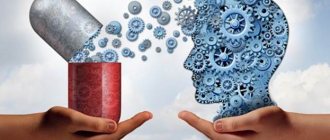Causes of nervous system disorders
Neurological diseases can be acquired or congenital. Provocative factors leading to disorders of the central nervous system are:
- Injuries. Traumatic brain injury leads to the development of various neurological disorders.
- Diseases of internal organs in the chronic stage.
- Hereditary predisposition. In this case, the manifestation of disorders begins from an early age: these are speech defects, tics, epileptic seizures, motor dysfunction, complete or partial loss of sensitivity.
- Circulatory disorders of cerebral vessels. Disorders include dizziness, disorientation, migraines, and confusion.
- Exhaustion of the body due to nervousness. Diseases that are caused by this cause differ in psychosomatic symptoms.
Encephalitis, meningitis
They are diagnosed when the brain is damaged and are included in the list of neurological diseases for determining disability. The soft membranes of the brain are exposed to harmful agents of a bacterial or viral nature.
Unfortunately, no one can be immune from these diseases. Such diagnoses are also made for newborns, and the cause in this case is an infection suffered during pregnancy. The danger of brain damage lies in complications: progressive dementia and conditions leading to disability. Delayed treatment can lead to cerebral edema and death.
Neurological sudden fall syndrome
Sudden falling is a syndrome of neurological disorders often observed in the elderly and senile.
The causes of a sudden fall may be discirculatory encephalopathy, cervical osteochondrosis with vertebrobasilar insufficiency, head movements due to vestibular disorders, rapid changes in body position (orthostatic hypotension), parkinsonism, pathology of the cerebellum and posterior cranial fossa, craniovertebral anomalies. Other causes of falling may be epilepsy, cardiogenic syncope, sudden muscle weakness due to fright, obsessive fear of losing balance, inattention due to dementia, or taking antipsychotics.
Treatment of this neurological syndrome depends on the underlying disease; drugs are most often prescribed to improve cerebral circulation and relieve dizziness.
Prevention of falls consists of training balance, teaching correct movements, safety nets using various devices (walkers, orthopedic shoes, wall brackets, etc.).
Age-related neurological pathologies
List of neurological diseases in people over 60 years of age that are incurable: senile dementia, multiple sclerosis (currently found in the younger generation of citizens), parkinsonism, Alzheimer's disease, cognitive impairment. The cause of their development is considered to be prolonged arterial hypertension, not compensated by drug therapy, failure of metabolic processes and insufficient blood supply to the brain. Below is a partial list of neurological diseases (in the table) associated with memory impairment in older people.
Timely seeking medical help will improve the patient’s quality of life and will allow the progression of the disease to be delayed for some time.
Conditions for which you should consult a doctor
Syndromes and symptoms of neurological diseases indicating problems in the functioning of the central and peripheral nervous system are as follows:
- constant fatigue;
- disorientation;
- sleep problems;
- memory impairment;
- weakening of attention;
- failure in muscle activity;
- formation of spots in the vision area;
- hallucinations;
- dizziness;
- confusion;
- tremor;
- pain that occurs suddenly and affects different parts of the body;
- panic attacks;
- feeling of numbness in the lower and upper extremities;
- paresis or paralysis.
Detection of the above signs requires medical attention, since they can be harbingers of serious neurological diseases, the list of which is divided into disturbances in the functioning of both the central and peripheral nervous systems.
Pain syndromes in neurology: signs, causes and treatment
Myofascial pain syndrome. One of the most common causes of neck and back pain is myofascial pain syndrome. Its main signs are tense, painful muscles upon palpation, in which areas of even greater muscle compaction are identified, as well as the presence of active trigger points in tense muscles, which project pain to fairly distant areas.
The causes of this pain syndrome in neurology are called antiphysiological postures, psychogenic factors (depression, stress), developmental anomalies, hypothermia, physical overload, and diseases of the musculoskeletal system.
Crampy syndrome . These are painful muscle spasms that usually occur at rest and last from a few seconds to several minutes. Symptoms of this neurological pain include muscle soreness and tightness. Crampy syndrome is most often observed in the muscles of the lower leg, foot and shoulder. The cause may be physical activity, hypothermia, dehydration, lack of calcium, potassium, magnesium, ischemia. Usually crampies do not pose a threat, but they can also be a symptom of a serious illness.
During an attack, passive stretching of the tight muscle, contrast baths, and elevated position of the limb are recommended.
To treat this pain syndrome in neurology, the following is used:
Finoptin
Diazepam
Redergin
Vitamin E
or Quinine
Types of research
If necessary, the neurologist will refer the patient for additional examinations:
- Magnetic resonance imaging is prescribed for disturbances of consciousness, hallucinations, and pain;
- Dopplerography is indicated for migraines and dizziness;
- electroneuromyography – for paralysis or paresis, as well as sudden pain.
- computed tomography helps determine the location and nature of the pathology;
- ultrasound examination of various organs depending on the patient’s complaints;
- positron emission tomography, which is used to diagnose injuries and consequences of diseases;
- echoencephalography is used to identify brain pathologies;
- neurosonography is used to study the brain of newborns;
- Craniography reveals bone fractures in the skull and birth defects.
The specific type of examination to be prescribed is determined by the attending physician, depending on the presence of symptoms. Treatment of neurological diseases and their prevention is his prerogative. Making decisions on your own about treatment or undergoing research is not recommended.
Types of alternating syndromes in neurology
Alternating syndromes in neurology are combined lesions of the nuclei or trunks of the cranial nerves on the side of the pathological process (tumor, cerebral tumors) and disorders of movement, sensitivity or coordination on the opposite half of the body.
The following are the most common types of alternating syndromes in neurology:
- Avelis syndrome - peripheral paralysis of the glossopharyngeal, vagus and hypoglossal nerves on the affected side and spastic hemiplegia on the opposite side.
- Benedict's syndrome - paralysis of the oculomotor nerve on the affected side and hemiataxia, intention tremor - on the opposite side.
- Wallenberg-Zakharchenko syndrome - paralysis of the soft palate, vocal cord, enophthalmos, miosis, ptosis, sensory disturbances on the face, cerebellar disorders on the affected side and hemiparesis, disturbances in pain and temperature sensitivity on the opposite side.
- Weber's syndrome is paralysis of the oculomotor nerve on the affected side and spastic hemiplegia on the opposite side.
- Millard-Gubler syndrome is a peripheral paralysis of the facial nerve on the affected side and spastic hemiplegia on the opposite side.
- Foville syndrome is a peripheral paralysis of the facial and abducens nerves on the affected side and spastic hemiplegia on the opposite side.
For neurological alternating syndromes caused by damage to the great vessels, surgical treatment is indicated.
Treatment methods
There are four methods of therapy that are successfully used to treat neurological diseases (their list is given above):
- Medicinal or medicinal. Includes a wide range of drugs that, in accordance with the instructions for medical use, are used to treat these conditions.
- Physiotherapeutic. Includes various physical therapy exercises aimed at different organs and muscles, as well as magnetic and laser therapy, electrophoresis and other types of physiotherapeutic effects.
- Surgical. This method is used when the disease progresses and there is a complete lack of effect from other methods of therapy. Surgical interventions are carried out on nerve fibers, spinal cord and brain.
- Non-medicinal. This includes diet therapy, herbal treatment, acupuncture, massage, manual and reflexology, osteopathy.
Diagnostics
Primary diagnosis is performed by a neurologist who conducts a clinical examination and determines the nature and area of localization of the pathology. One of the most effective diagnostic methods is x-ray examination. Thanks to this procedure, the doctor can determine the condition of the patient’s osteo-articular tissues of the spine.
Additionally, an MRI may be performed. This is a more detailed and modern research method that allows you to obtain a more detailed image of bones, blood vessels, cartilage tissue, muscles and ligaments.
Doppler ultrasound and EEG video monitoring can also be performed. Duplex scanning of the vessels of the neck and brain is effective. Other studies may also be prescribed, for example, neurosonography, electroneuromyography and other diagnostic procedures.
After receiving the study results, the data is sent to the neuroscience research center. A comprehensive neurological examination can cost from 10,000 to 80,000 rubles. in a private clinic. Consultation with some doctors can be obtained at the district clinic free of charge (due to the compulsory health insurance policy).
Children's neurological diseases: list and description
The main reasons provoking neurological stress or breakdown are recognized:
- psychological trauma;
- chronic stress;
- uncomfortable and aggressive environment in which the child is located;
- uncontrolled physical and mental stress;
- inability to cope with strong emotions (fear, resentment).
A child’s undeveloped nervous system does not have time to respond in a timely manner to various stressful situations, so children cannot quickly adapt to difficult living conditions. According to medical statistics, the list of childhood neurological diseases is steadily growing. The most defenseless inhabitants of the globe are affected by diseases such as:
- Enuresis or urinary incontinence. Very common in young boys and manifests itself in decreased control at night. Child neurologists call the reasons for this condition: family quarrels, stress, constant punishment of the child.
- Various neuroses that occupy a leading place among all neurological disorders: fear of heights, darkness, loneliness and others;
- stuttering. Most often found in boys. The reason is a strong shock in the form of fright or trauma, i.e. something that the child could not cope with on his own and there was a failure in the speech process.
- Tiki. There are motor types, they are expressed in twitching, blinking or shrugging; vocal – grunting, coughing; ritual - all actions performed in a certain sequence are repeated; generalized, which combine several types. The cause of tics lies in a lack of communication, attention, as well as excessive care and stress.
- Neurotic sleep disorders. The prerequisites for the development of this condition are considered to be regular overwork in additional sections, at school and chronic stress.
- Headache. The presence of this symptom indicates the presence of a pathological process of a neurological nature in the child’s body.
- Attention deficit disorder. It especially often manifests itself during school and can then continue into adulthood. Manifestations of the syndrome are anxiety, aggressiveness, negativism, and emotional lability.
The list and description of neurological diseases in childhood can be continued endlessly. In order to effectively treat pathologies of the nervous system, you should seek medical help in a timely manner. Partially helping to avoid these violations is finding a common language with the child, support and faith in his own strengths, leniency and patience, and a psychologically favorable climate in the family. The main thing in such situations is not to look for those to blame, but together with specialists (neurologists, psychologists) to find the right way out, thinking first of all about the younger generation.
Neurological chronic fatigue syndrome: causes and treatment of the disease
Chronic fatigue syndrome (CFS) is fatigue that lasts for several months in the absence of another illness. The cause is considered to be previous infection, endocrine disorders, and stress. Particular importance is attached to the increased release of immune mediators - cytokines.
Symptoms of this neurological syndrome may appear suddenly in the absence of complete health. Patients feel weakness, fatigue, headaches, pain in the throat, muscles, and joints. Memory and attention decrease, sleep is disturbed, and depression develops. CFS does not progress, but complete recovery is rare.
Treatment is complex and symptomatic. First of all, a thorough repeated examination of the patient is necessary, then NSAIDs, antidepressants, and antiasthenic drugs are prescribed:
Mildronate
Cogitum
succinic acid
St. John's wort
Physical activity is limited, dosed exercises are selected, but long-term rest and hospital treatment are not indicated.
Neurological diseases in newborns
The list of these pathologies is headed by the most common, such as:
- Hypertonicity and hypotonicity. A sign of the first is considered to be tension in the muscle tissue that does not go away after the first week of the baby’s life. Symptoms of the second - the upper and lower limbs are extended, with passive extension there is no resistance. Treatment consists of regular exercises and massage courses.
- Central nervous system disorder syndrome. It is assumed that this condition occurs in a large number of newborns. The reasons for its appearance lie in the adverse effects of external conditions on the nervous system during gestation, delivery and in the first days of the baby’s life. At the first signs of illness, treatment should be started immediately using physiotherapeutic methods. Untimely therapy will subsequently result in brain dysfunction.
- Intracranial pressure. It may be unstable or increase and lead to hypertensive-hydrocephalic syndrome. Symptoms that should alert a young mother manifest themselves in the form of frequent crying, regurgitation, especially when the atmospheric pressure changes, irritability or, conversely, drowsiness, lethargy, and lack of appetite. A pattern of veins appears on the bridge of the nose, temples and skull of the baby, which is visible to the naked eye. By the beginning of the second month of birth, the size of the baby's head may increase.
- Perinatal cerebral hypoexcitability. It occurs periodically or can be constant, and has varying severity. The baby shows passivity, lethargy, he does not show curiosity, muscle activity is reduced, the main reflexes - swallowing and sucking - are reduced, low motor activity. This type of pathology is typical for premature infants, as well as those who have been exposed to hypoxia or birth trauma.
Any mother needs to know the signs of neurological diseases in children, the list of which is listed above, and at the slightest suspicion, seek qualified help from doctors in a medical institution.
Neurological examination of reflexes and motor functions
A neurological examination of reflexes and motor functions examines volume, muscle strength, muscle tone, and reflexes to identify and evaluate voluntary movement disorders.
To determine the range of movements, the patient is asked to alternately perform movements in various joints of the arms and legs and observe the completion of the task.
When diagnosing neurology, muscle strength is assessed with a dynamometer or by the degree of resistance (for example, to study the strength of the forearm flexors, the patient’s arm is extended, bent at the elbow joint).
The inability to make active movements is regarded as paralysis; significant decrease in muscle strength as deep paresis; slight decrease in strength as mild paresis.
In clinical practice, muscle strength is sometimes assessed on a five-point scale: from 5 points (normal) to 0 (complete paralysis, absence of any strength and movement). To identify hidden paresis, the Barre test is used. With the upper Barre test, the patient is asked to stretch both arms forward; on the affected side, the hand gets tired faster and drops. With the lower Barre test, the patient, lying on his back or stomach, bends his legs at the knee joints at a right angle; on the affected side the leg drops faster than on the healthy side.
To determine muscle tone, passive movements are made in the joints of the limbs. Normally, a slight resistance of relaxed muscles is detected; with central (spastic) paralysis and paresis - spastic muscle tension; and with peripheral (flaccid) - muscle hypotonia.
Muscle trophism is examined visually. Pay attention to the symmetry of the muscles, the presence of atrophies (emaciation), which are detected by measuring symmetrical areas.
Reflexes are distinguished between deep (tendon-periosteal), superficial and pathological. Their arcs close at a certain level of the nervous system.
The deep reflexes most often studied include:
- Carpal-radial (carporadial) - slight flexion of the arm at the elbow joint when hitting the styloid process of the radius with a hammer
- Bicepsial - flexion of the forearm when hitting the biceps tendon with a hammer
- Tricepital - extension of the forearm half-bent at the elbow joint when hitting the triceps tendon with a hammer
- Knee - extension of the lower leg when hitting the patellar tendon with a hammer
- Achilles - plantar flexion of the foot when hitting the Achilles tendon with a hammer
Deep reflexes are reduced or extinguished when the peripheral neuron of the motor pathways is damaged and increased when the central neuron is damaged.
Surface reflexes include:
- Corneal (corneal) - closing of the eyelids when touching the cornea
- Pharyngeal - coughing, gagging movements due to irritation of the pharyngeal wall
- Abdominal (upper, middle, lower) - contraction of the muscles of the abdominal wall during stroke stimulation
- Plantar - flexion of the toes with stroke stimulation of the outer edge of the sole
Pathological reflexes. When the cerebral cortex is damaged, the following pathological subcortical reflexes can be observed (some of them are found normally in young children):
- Proboscis - contraction of the orbicularis oris muscle, protrusion of the lips forward when tapping the upper or lower lip with a hammer
- Padono-mental (Marinesco-Radovici) - contraction of the muscles of the chin with stroke stimulation of the thenar area
- Grasping (Yanishevsky) - when the palm of the proximal phalanges is irritated, the patient grabs an object and holds it tightly in his fist
Damage to the pyramidal tracts is characterized by pathological reflexes on the feet and hands:
- Babinski's sign is the most constant, clinically important reflex, which is manifested by slow tonic extension of the big toe with line irritation of the outer edge of the sole (in this case, a fan-shaped divergence of the remaining toes is possible)
- Rossolimo's sign superior - flexion of all fingers of the hanging hand with a short blow to the terminal phalanges of the II-V fingers
- Rossolimo's symptom lower - rapid plantar flexion of the toes with a short blow to the terminal phalanges of the II-V fingers
